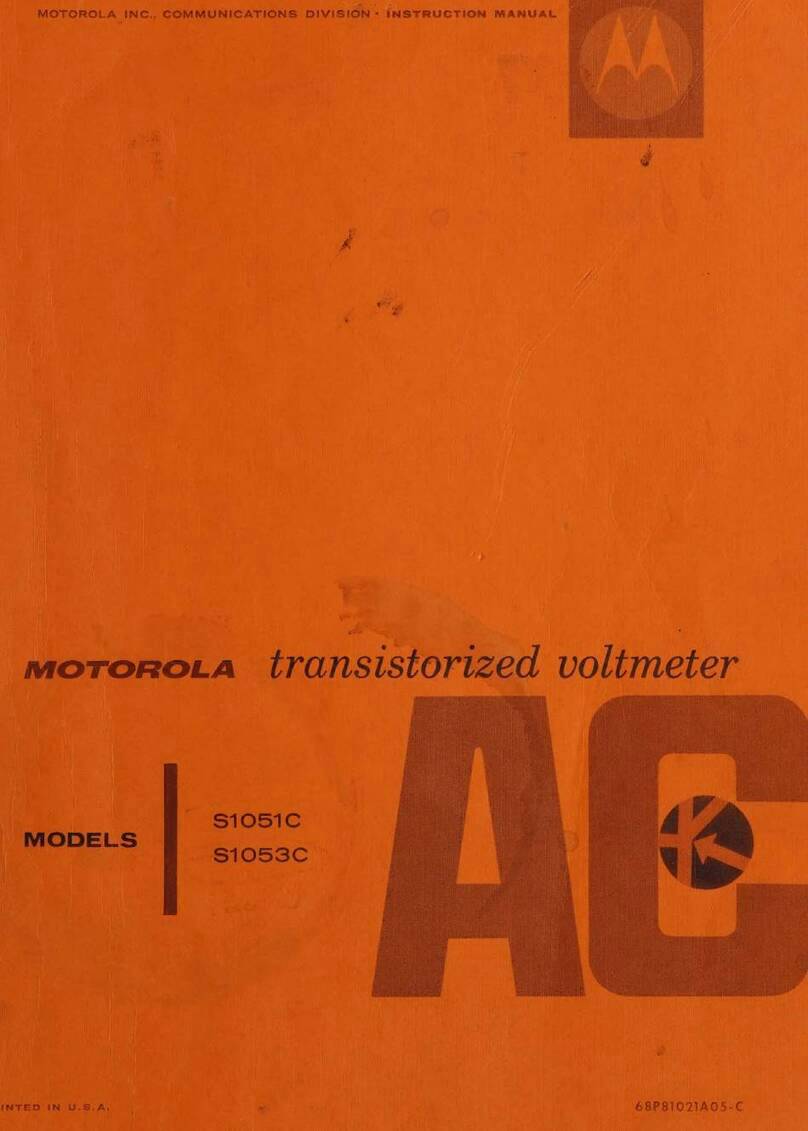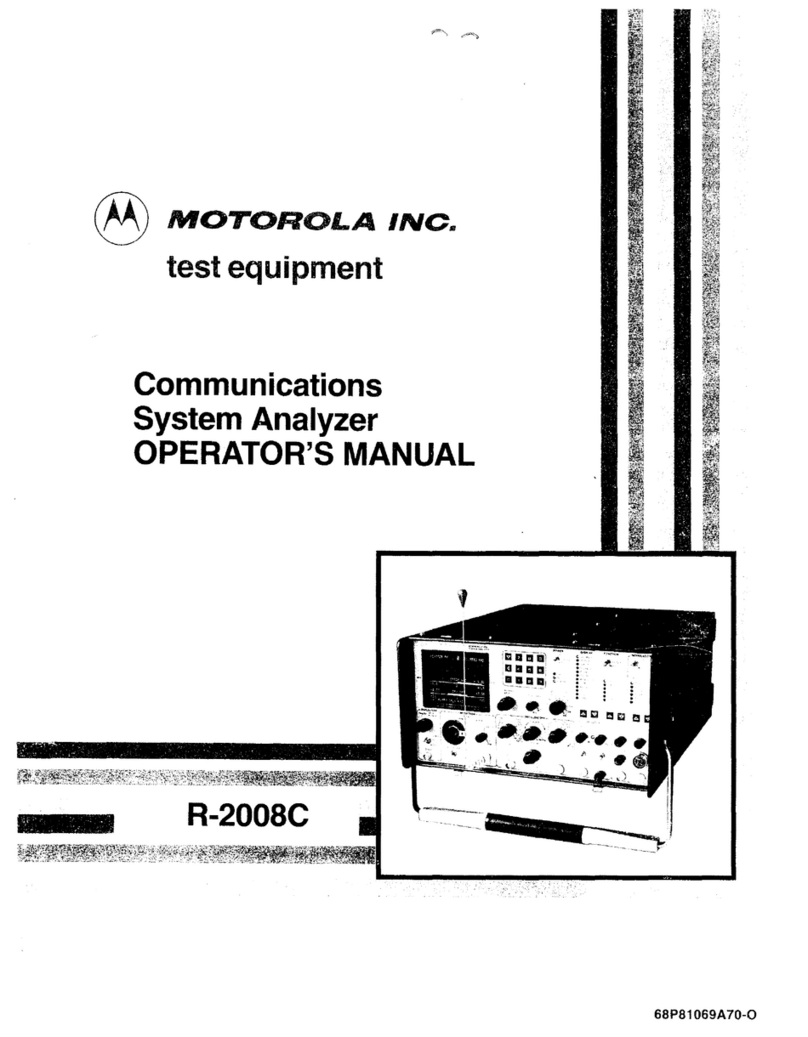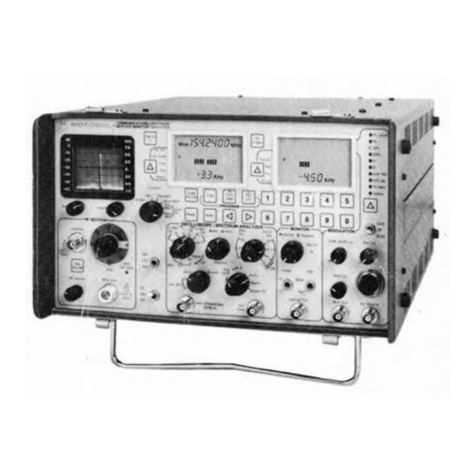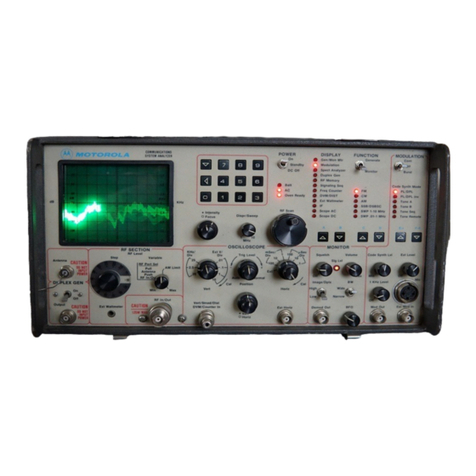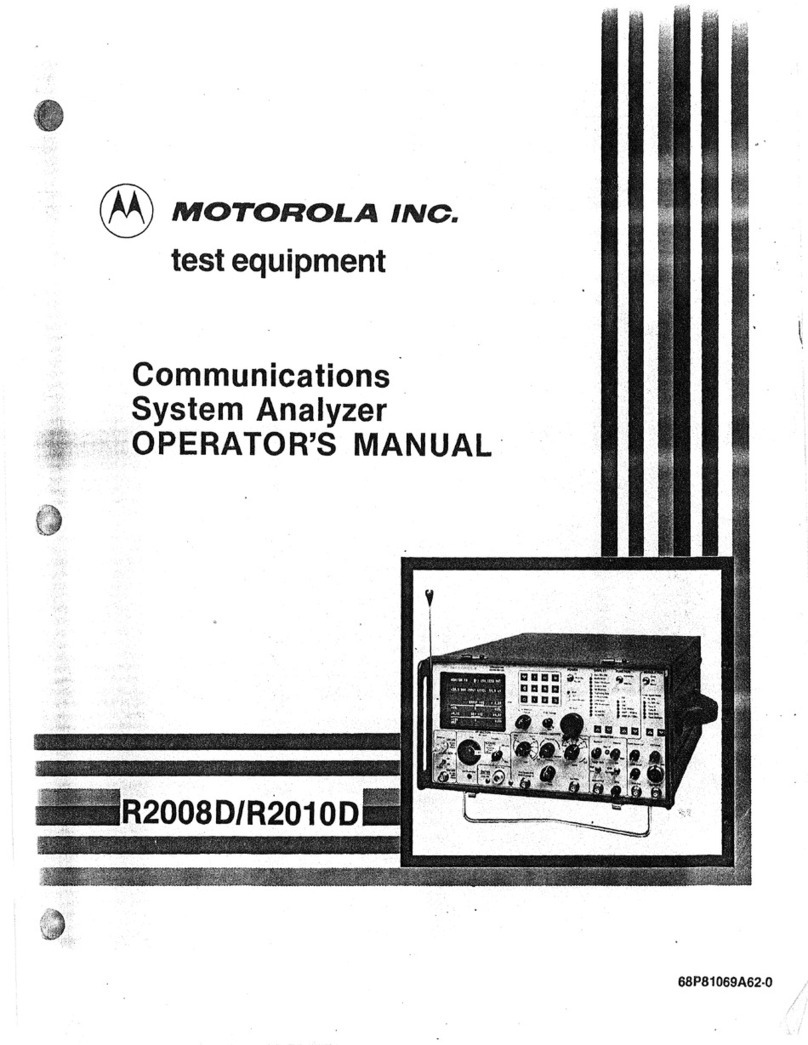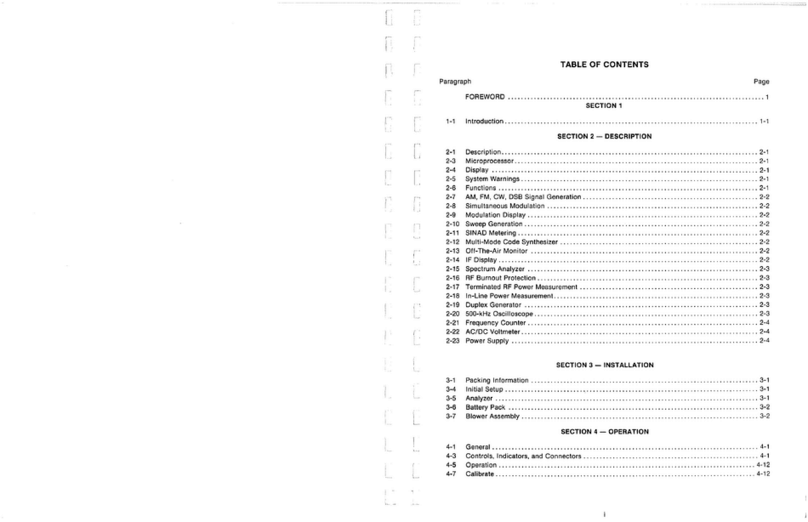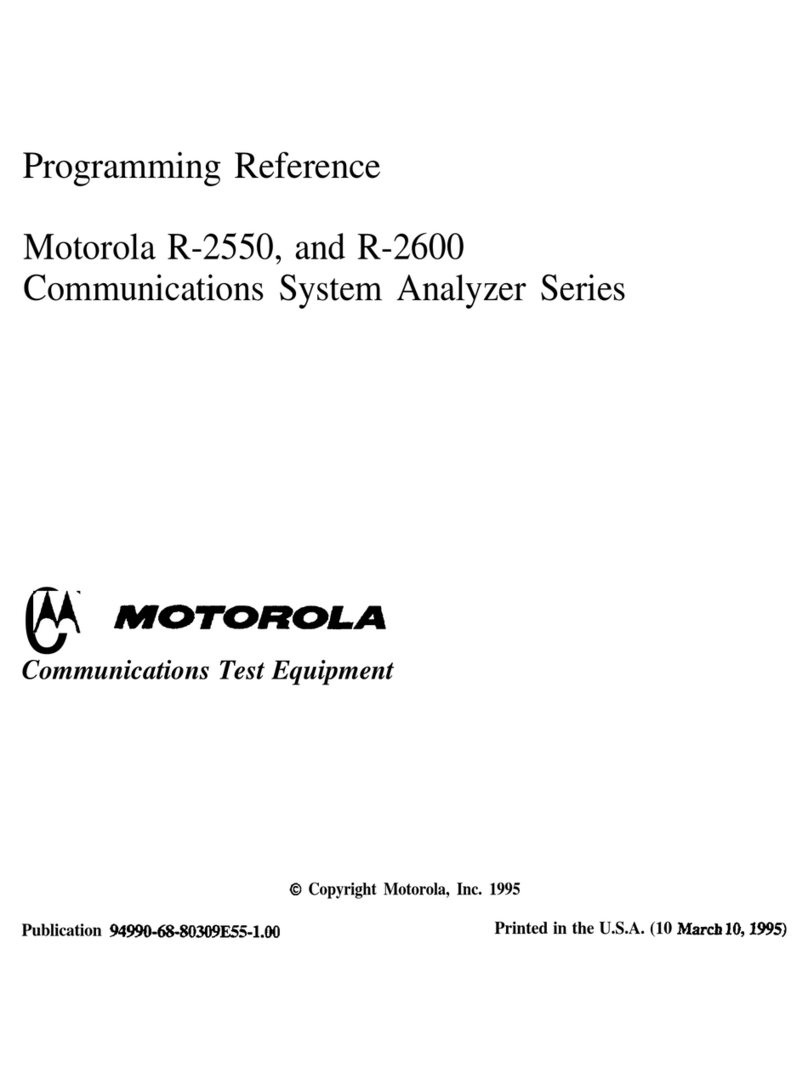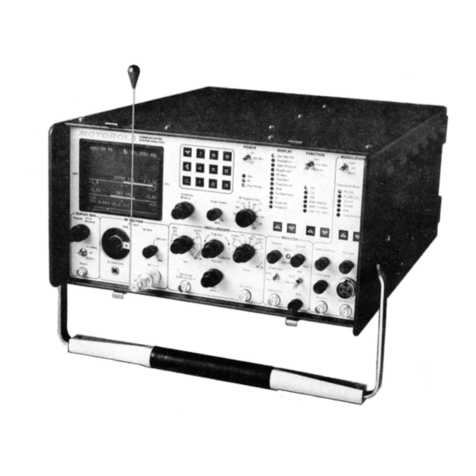
LIST OF ILLUSTRATIONS
.~·
Figure Page
1-1
Communications System Analyzer
..........................................................
1-0
~
2-1
Accessories Supplied with Analyzer
.........................................................
2-4
3-1
Typical Communication System Analyzer Packaging
.........................................
3-1
4-1
Controls, Indicators, and Connectors, Front Panel
...........................................
4-2
4-2 Controls, Indicators, and Connectors, Left Side Panel
.......................................
4-3
4-3 Controls, Indicators, and Connectors, Rear Panel
............................................
4-3
4-4 System Analyzer
Time
Base Calibrate Test Setup and CRT Display
..........................
4-13
4-5 Duplex Generation Test Setup and CRT Display
............................................
4-14
4-6 Spectrum Test Setup and CRT Display
.....................................................
4-16 -
4-7 Wattmeter Test Setup and CRT Display
....................................................
4-17
4-8 Test Setup
for
FM
Receiver Sensitivity Using Generator and SINAD
Meter with CRT Display
...................................................................
4-18
4-9 Test Setup
for
Pager and Alert Functions with CRT Display
.................................
4-19
4-10 Test Setup
for
Using DVM and Signal Generate with CRT Display
...........................
4-20
5-1
Communication System Analyzer,
Top
View Cover Removed
.................................
5-3
5-2 Communication System Analyzer, Bottom View Cover Removed
..............................
5-3
5-4 Generate Mode Block Diagram
............................................................
5-10
5-5 Power Meter
Block
Diagram
..........................................................•....
5-12
5-6
Monitor
Mode
Block
Diagram
.............................................................
5-13
5-7 Duplex Generator Block Diagram
..........................................................
5-15
5-8 Code Synthesizer
Block
Diagram
..........................................................
5-16
5-9 Frequency Counter Block Diagram
........................................................
5-17
,....-"""\
5-10 Digital Voltmeter (DVM) Block Diagram
....................................................
5-18
5-11
Oscilloscope Block Diagram
...............................................................
5-20
""'"'
5-12 Sinad Meter Block Diagram
...............................................................
5-22
5-13 Scope
Amplifier
Alignment
Points
.........................................................
5-23
5-14 Front Panel Interface
Alignment
Points
....................................................
5-26
5-15 Scope/DVM Control
Alignment
Points
.....................................................
5-27
5-16 Horizontal Time Base
Alignment
Points
....................................................
5-27
5-17 DVM Input Buffer
Alignment
Points
........................................................
5-28
5-18 Scope/DVM Control Test Point Numbering
.............................................•....
5-28
5-19 Processor 1/0
A/D
Alignment Points
.......................................................
5-29
5-20 Scope/DVM Control Char Sweep and Sinad Alignment Points
...............................
5-30
vi
